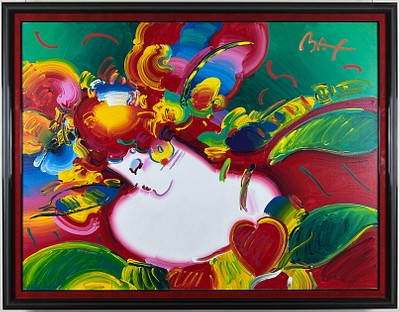Lord Frederic Leighton "Flaming June, 1895" Oil Painting
Lot 840
Estimate:
$2,000 - $4,000
Absentee vs Live bid
Two ways to bid:
- Leave a max absentee bid and the platform will bid on your behalf up to your maximum bid during the live auction.
- Bid live during the auction and your bids will be submitted real-time to the auctioneer.
Bid Increments
| Price | Bid Increment |
|---|---|
| $0 | $5 |
| $100 | $10 |
| $200 | $20 |
| $1,000 | $50 |
| $5,000 | $100 |
| $10,000 | $200 |
About Auction
By Scottsdale Art Exchange
Jul 29, 2023
Set Reminder
2023-07-29 12:00:00
2023-07-29 12:00:00
America/New_York
Bidsquare
Bidsquare : Our Annual Midsummers Day Auction
https://www.bidsquare.com/auctions/scottsdale-art-exchange/our-annual-midsummers-day-auction-13196
This auction will feature 900 amazing items. The Auction will include 300 items for our fine art gallery and over 600 items from our consignment partners. Scottsdale Art Exchange sue@firerockfineart.com
This auction will feature 900 amazing items. The Auction will include 300 items for our fine art gallery and over 600 items from our consignment partners. Scottsdale Art Exchange sue@firerockfineart.com
- Lot Description
Lord Frederic Leighton, also known as Frederic Leighton, 1st Baron Leighton (1830-1896), was a prominent British painter and sculptor. Here's some information about Lord Frederic Leighton: 1. Early Life and Education: Frederic Leighton was born in Scarborough, England, and showed an early interest in art. He received his formal artistic training at the Royal Academy of Arts in London, where he studied under notable artists including John Everett Millais and John Ruskin. 2. Style and Subjects: Leighton's artistic style was characterized by his focus on classical and historical themes, often depicting scenes from ancient civilizations or mythological narratives. He had a strong emphasis on classical beauty, idealized figures, and richly detailed compositions. His works often exuded a sense of grandeur, elegance, and emotional intensity. 3. Academician and President of the Royal Academy: Leighton became an Associate of the Royal Academy in 1864 and was elected as a Royal Academician in 1868. He served as the President of the Royal Academy from 1878 until his death in 1896. Leighton played a crucial role in shaping the artistic landscape of Victorian England. 4. Notable Works: Some of Leighton's most famous works include "Flaming June," a sensual and vibrant depiction of a sleeping woman, "The Fisherman and the Siren," a powerful representation of mythological subjects, and "Cimabue's Celebrated Madonna," which shows the devotion of an artist to his work. His sculptures, such as "Athlete Wrestling with a Python" and "An Athlete Struggling with a Python," also received acclaim. 5. Travel and Inspiration: Leighton traveled extensively throughout Europe, particularly Italy, Greece, and North Africa, seeking inspiration for his art. He drew from his experiences, incorporating elements of different cultures and landscapes into his works. 6. Legacy: Lord Frederic Leighton made a significant impact on the Victorian art scene and was highly respected during his lifetime. His works continue to be celebrated for their technical mastery, classical elegance, and emotional depth. His dedication to the arts was recognized when he was elevated to the peerage as the first and only Baron Leighton in 1896, the year of his death. Lord Frederic Leighton's artistic contributions left a lasting legacy, influencing subsequent generations of artists. His works exemplify the grandeur and beauty of classical themes, and his position as President of the Royal Academy further solidified his influence on the British art establishment.
Measures 30 x 40.
Frame measures 43.5 x 33.5.
Sold "after" Leighton.Good condition. No rips, tears, creases.Condition
- Payment & Auction Policies
-
Available payment options
-
-
- Buyer's Premium



 EUR
EUR CAD
CAD AUD
AUD GBP
GBP MXN
MXN HKD
HKD CNY
CNY MYR
MYR SEK
SEK SGD
SGD CHF
CHF THB
THB




















